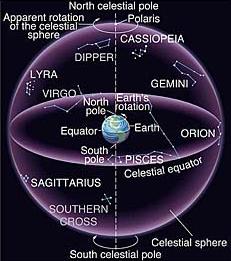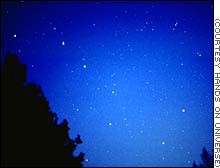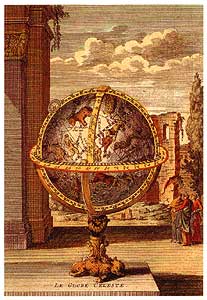|
Motions on the Celestial
Sphere
- Proper motion: Subtract
the effect of Earth's daily rotation and yearly orbit, to find actual
displacements on the celestial sphere.
- The Sun and the Moon: They always move
Eastward, the Sun along the
ecliptic, the Moon on a faster orbit that produces different
"phases".
- Planet: They move in more complicated,
slow paths near the ecliptic, usually West to East but sometimes with
an apparent retrograde motion (East to West); Occasionally they are
in conjunction, in opposition, or they transit the Sun.
- Other objects: Small "nearby" objects
(comets,
asteroids, or even closer ones) move much faster, stars and more distant
objects
not
at
all,
as seen
with the naked eye.
- Telescope view: Nearby stars
show a slight back and forth motion every six months (parallax),
or move in other ways over periods of years. (Forget completely about
seeing galaxies move, although most of them are moving at millions
of
mph, at least!)
- What have humans made of all this?
They identified constellations and assigned meanings to their
patterns; Tried to interpret or understand the motions of planets;
Concluded that the Earth doesn't move, from evidence
including the apparent lack of stellar parallax...
|
 |
HST_125x125.jpg)

HST_125x125.jpg)



![]()